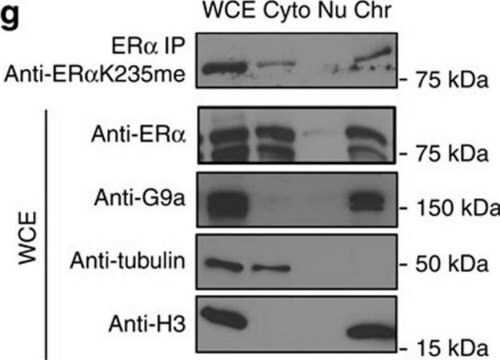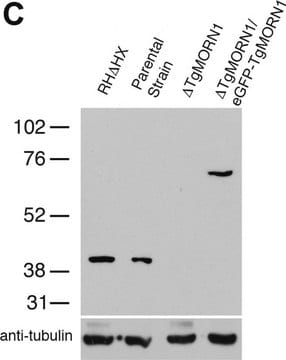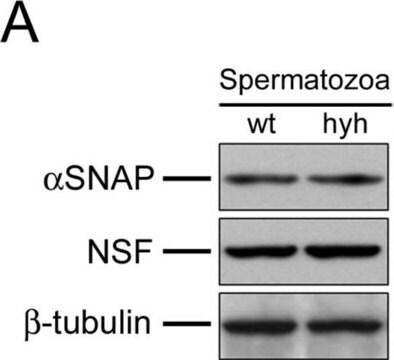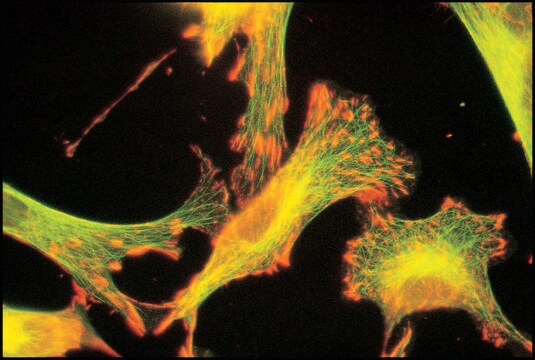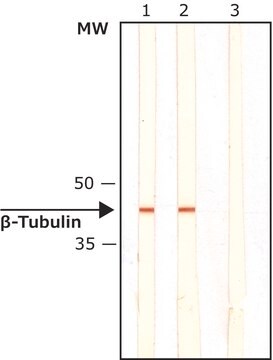T7816
Monoclonal Anti-β-Tubulin I antibody produced in mouse
clone SAP.4G5, ascites fluid
Sinónimos:
Anti-CDCBM6, Anti-CSCSC1, Anti-M40, Anti-OK/SW-cl.56, Anti-TUBB1, Anti-TUBB5
About This Item
Productos recomendados
biological source
mouse
Quality Level
conjugate
unconjugated
antibody form
ascites fluid
antibody product type
primary antibodies
clone
SAP.4G5, monoclonal
mol wt
antigen ~55 kDa
species reactivity
Xenopus, chicken, human, hamster, canine, mouse, bovine, rat
technique(s)
immunocytochemistry: suitable
immunohistochemistry (formalin-fixed, paraffin-embedded sections): suitable
indirect ELISA: suitable
microarray: suitable
western blot: 1:20,000 using cultured chicken fibroblasts
isotype
IgG1
UniProt accession no.
shipped in
dry ice
storage temp.
−20°C
target post-translational modification
unmodified
Gene Information
human ... TUBB(203068)
mouse ... Tubb4(22153)
Categorías relacionadas
General description
Specificity
Immunogen
Application
Disclaimer
¿No encuentra el producto adecuado?
Pruebe nuestro Herramienta de selección de productos.
Optional
Storage Class
10 - Combustible liquids
wgk_germany
nwg
flash_point_f
Not applicable
flash_point_c
Not applicable
Elija entre una de las versiones más recientes:
¿Ya tiene este producto?
Encuentre la documentación para los productos que ha comprado recientemente en la Biblioteca de documentos.
Los clientes también vieron
Artículos
Microtubules of the eukaryotic cytoskeleton are composed of a heterodimer of α- and β-tubulin. In addition to α-and β-tubulin, several other tubulins have been identified, bringing the number of distinct tubulin classes to seven.
Nuestro equipo de científicos tiene experiencia en todas las áreas de investigación: Ciencias de la vida, Ciencia de los materiales, Síntesis química, Cromatografía, Analítica y muchas otras.
Póngase en contacto con el Servicio técnico